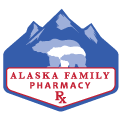Eosinophilic Esophagitis
Oral Viscous Budesonide (OVB) for Treatment of Eosinophilic Esophagitis
Eosinophilic esophagitis (EE) is a disease most likely due to an immunologic response to ingested and inhaled allergens. Presenting symptoms of EE often mimic those of gastroesophageal reflux disease (GERD) and include vomiting, dysphagia, pain, and food impaction. However, because the treatment of EE and GERD differs, it is important to distinguish between them. Swallowed topical steroids, such as fluticasone propionate, have been administered using a metered-dose inhaler (MDI) without a spacer, with instructions to not inhale, but to puff and swallow, thus delivering a topical antiinflammatory product to the esophageal mucosa. Although effective in lowering eosinophil levels, this technique of administering aerosolized corticosteroids, which are often bitter to taste, may be complicated for young children, and twice daily administration is necessary. However, this treatment is attractive because only 1% of the steroid is absorbed systemically and it undergoes rapid hepatic processing. The main potential side effect is oral/esophageal Candida infection that developed in 3 of 20 patients in one series.1
Budesonide is a corticosteroid with high topical anti-inflammatory activity but low systemic activity due to extensive hepatic metabolism. Aceves et al. of Children’s Hospital and the Department of Pediatrics, University of California, San Diego, reported the successful treatment of EE using an oral viscous suspension of budesonide in 2 patients who were unable to utilize fluticasone propionate for developmental reasons.2
Researchers noted: “Our data suggest that OVB is an effective and safe treatment for young children with proven EE. It may have advantages over other therapies in that it is palatable, its volume (8–12 ml) provides pan-esophageal mucosal coverage, and it requires only once daily administration.”3 The increased viscosity of OVB may prolong budesonide’s contact time with the esophageal mucosa. No significant adverse events were reported. Morning cortisol levels were within normal limits.
1 J Pediatr Gastroenterol Nutr 1998;27:90–3.
Treatment of eosinophilic esophagitis with inhaled corticosteroids.
Click here to access the PubMed abstract of this article.
2 J Allergy Clin Immunol 2005;116:705–6.
Topical viscous budesonide suspension for treatment of eosinophilic esophagitis.
Click here to access the PubMed abstract of this article
3 Am J Gastroenterol. 2007 Oct;102(10):2271-9.
Oral viscous budesonide: a potential new therapy for eosinophilic esophagitis in children.
Click here to access the PubMed abstract of this article.
Compounding content © 2005-2017 , Storey Marketing. All rights reserved.

